When I was on my RV trip from California to Texas, one of the things I thought about often was getting some real Tex Mex food. I’m not sure what I thought it was going to be but I was positive it would be something wonderful. Color me confused when I arrived in Texas and had “Mexican food” a couple of times. I was expecting this elusive Tex Mex cuisine and what I got was food I was used to getting in Mexico or some Mexican restaurants in California. Color me shocked when I researched the difference between Mexican and Tex Mex food.
I grew up in southern California and ate probably more than my fair share of Mexican food. It is a cuisine I could live on. Mexican restaurants are in no short supply there: large chains like El Torito; small mom and pop places; and fast food like Taco Bell. I loved them all. I was always in search of the best little hole in the wall place and I had a couple of favorites.
When I arrived in Texas and started getting food that seemed more authentically Mexican to me, I had to find out what the difference is between Mexican and Tex Mex. Imagine my surprise when I learned that most of the Mexican food I’d been eating all my life in California is really Tex-Mex! Although Tex-Mex did get its start in Texas, it is now what is typically called Mexican food north of the border.

This was my first Mexican meal in Texas. Where’s the cheese? Where’s the lettuce and tomato? Where’s the sour cream?
So, what is the difference between Mexican and Tex Mex food?
Tex-Mex Dishes that Might Surprise You
- Fajitas
- Crispy tacos
- Nachos
- Burritos
- Chili con carne
- Queso dip
The Difference is in the Ingredients
The main difference between traditional Mexican dishes and Tex Mex boils down to a few key ingredients. Share on XCheese
- One of the most obvious of differences is the color of the cheese on your plate. If it is yellow cheese, you are eating Tex-Mex. Mexican dishes use white cheeses such as cotija. Cheese is also a much more heavily used ingredient in Tex-Mex, like in cheese quesadillas and cheese enchiladas, or everyone’s favorite, nachos smothered in molten yellow cheese. The queso dip (Velveeta & Ro-tel) was created by a Mexican restaurant owner in Arkansas.
Protein
- The proteins commonly used in Mexican food are chicken and pork, or seafood along the coast. Beef is rarely used in Mexico, except along the US border where cattle ranching is prevalent. A favorite dish in many US Mexican restaurants is fajitas, a Tex-Mex creation. Although you can get them today with other kinds of meat, the name comes from the word “faja” which means strip and refers to the cut of beef used. Chili con carne is a Texas creation and is the state dish of Texas.
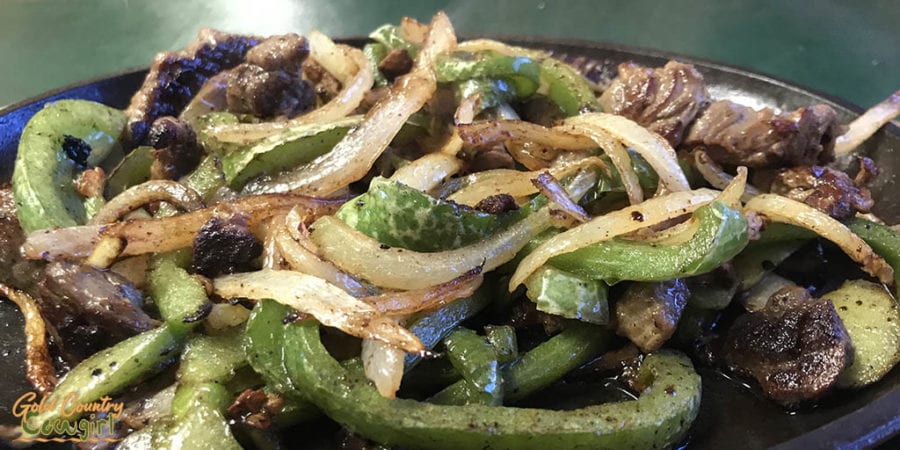
Although these steak fajitas are a Tex-Mex creation, they came what I would call “Mexican style.” No cheese, sour cream or guacamole.
Tortillas
- Are your tortillas made of corn or wheat flour and are they soft or crisp? If your taco is wrapped in a flour tortilla or in a crispy corn shell, you are eating Tex Mex. Tacos in Mexico are always made with a soft corn tortilla. Ground beef in a crisp tortilla, which Taco Bell brought into the mainstream, is a staple in Tex-Mex cooking. Burritos wrapped in a wheat tortilla are a Tex-Mex adaptation.
Spices
- You may associate the spice cumin with Mexican cooking but it was introduced to North America from India. It is not a traditional Mexican seasoning but is heavily used in Tex-Mex dishes. You may also think that chili powder comes from Mexico but it was created in San Antonio in the 1870s by a German immigrant. His recipe was a mix that included cumin, ancho chilies, oregano, and black pepper.
Sauces and condiments
- Sauces and condiments differ, too. Mole sauce is the national dish of Mexico. There are seven main types but lots of other variations. Sauces on Mexican dishes are usually some variation of mole or a green sauce. If your sauce is red, cheesy or creamy, you are probably eating Tex-Mex. Tex-Mex dishes often are served with sour cream whereas Mexican dishes use crema, a thinner sauce more like creme fraiche.
Was I disappointed in what I learned about the difference between Mexican and Tex Mex?
Writing this post and looking at the photos, I realize it has been a really long time since I’ve had Tex Mex with lots of ooey, gooey cheese and sauce. The truth is, these days, the lines are becoming quite blurred as American ingredients are more available in Mexico and restaurants adapt recipes to cater to the tastes of tourists. What I know is, that even though I didn’t discover a new, delicious cuisine, I can continue to enjoy both the Tex Mex and Mexican food I love, here in Texas as well as when I make my day trips across the border into Mexico.
Do you love Tex-Mex food or are you a die hard purist for Mexican food? Did you know the difference?
Until next time…
 Read more:
Read more:
The Difference Between Tex-Mex vs Mexican Food, According to a Texas Native
A Brief History Of Mole, Mexico’s National Dish






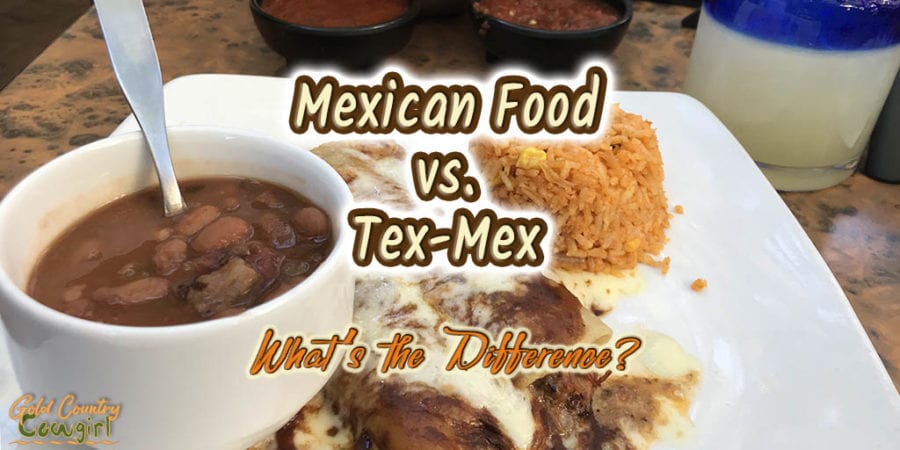
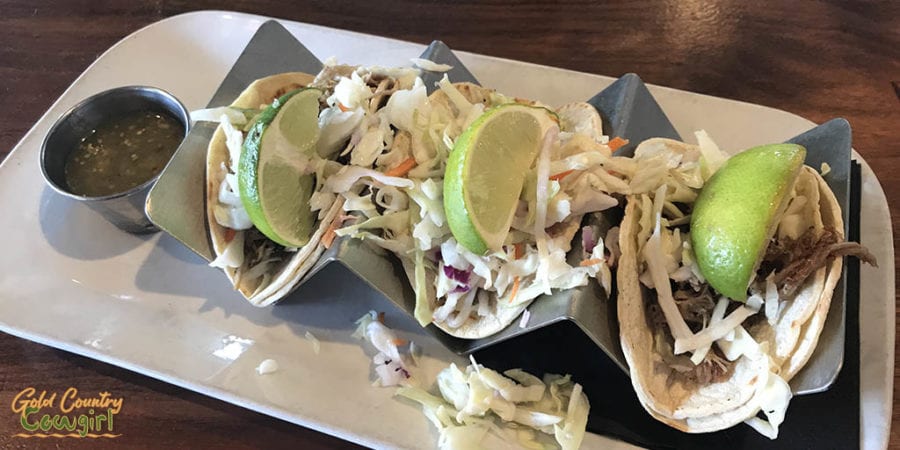
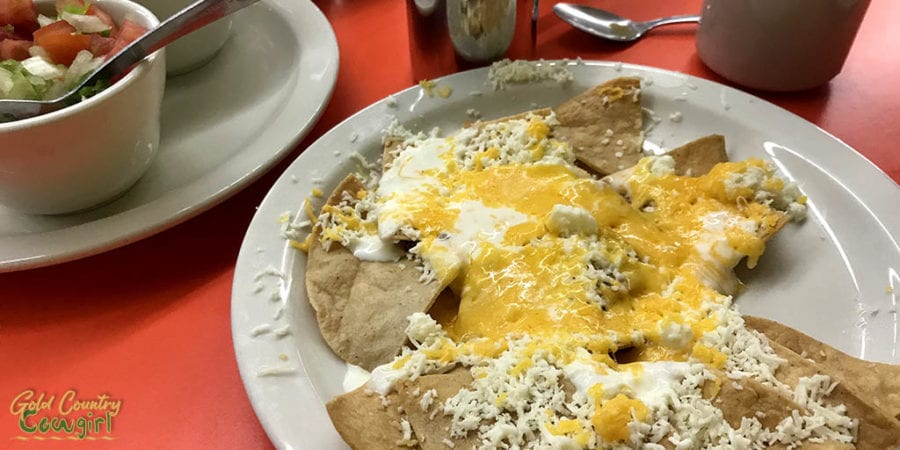
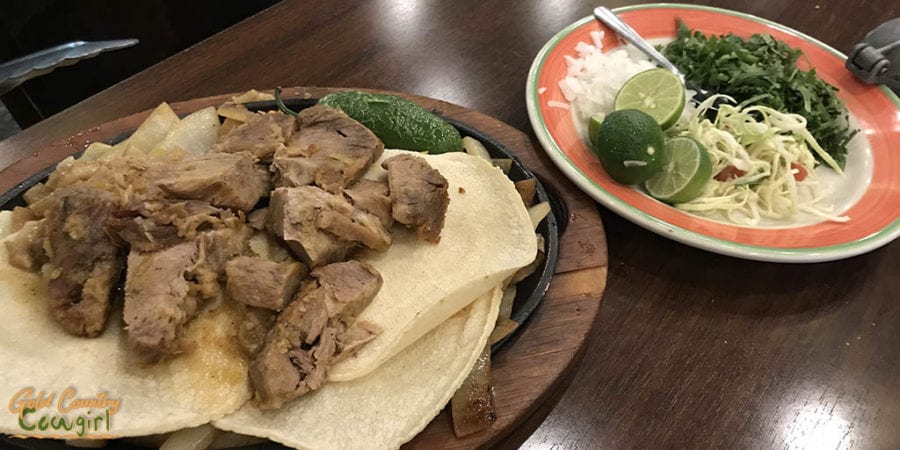
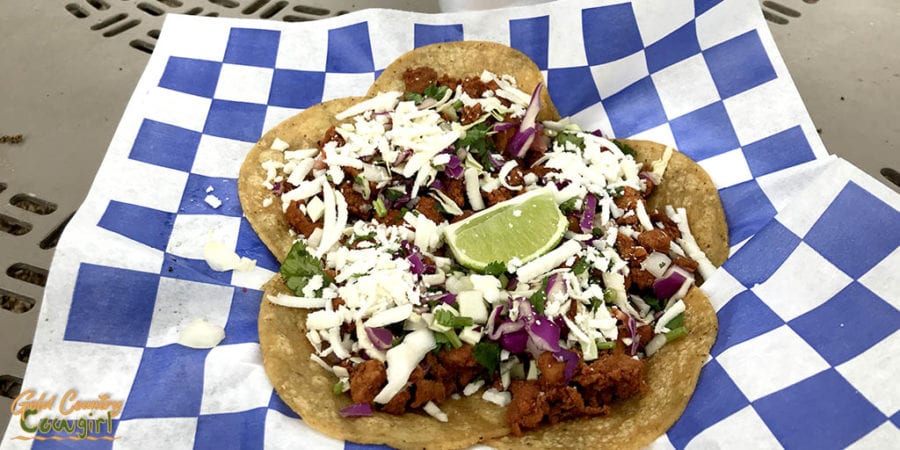
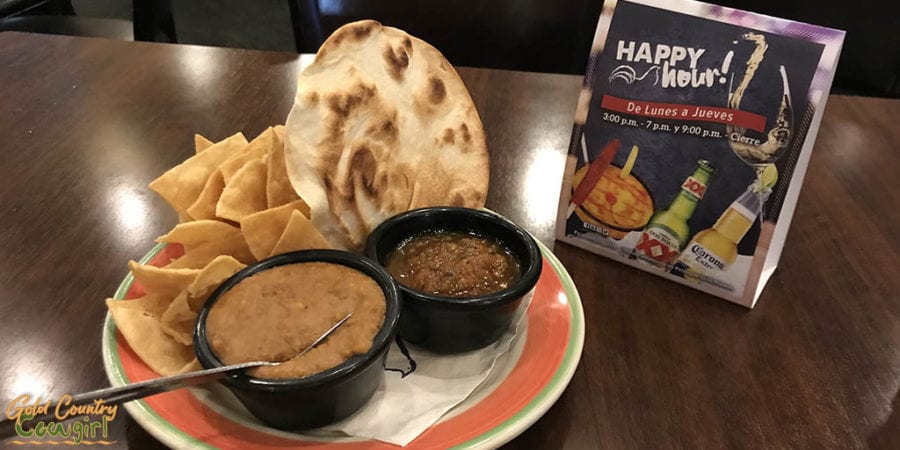
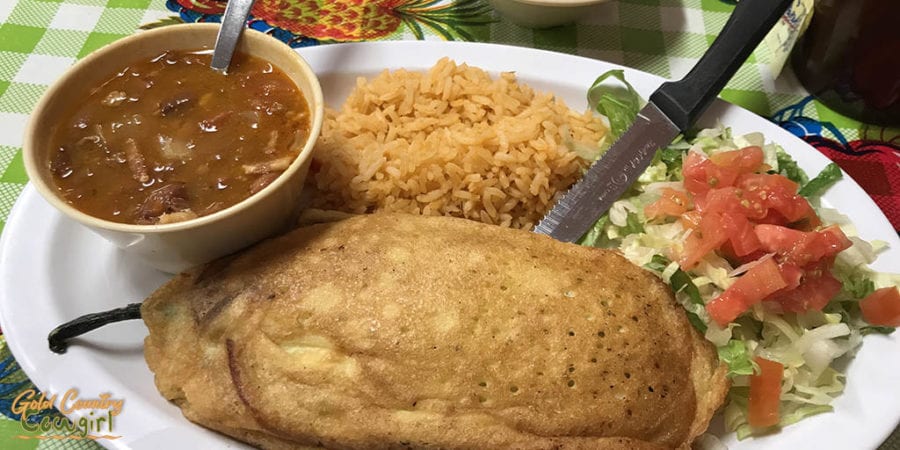
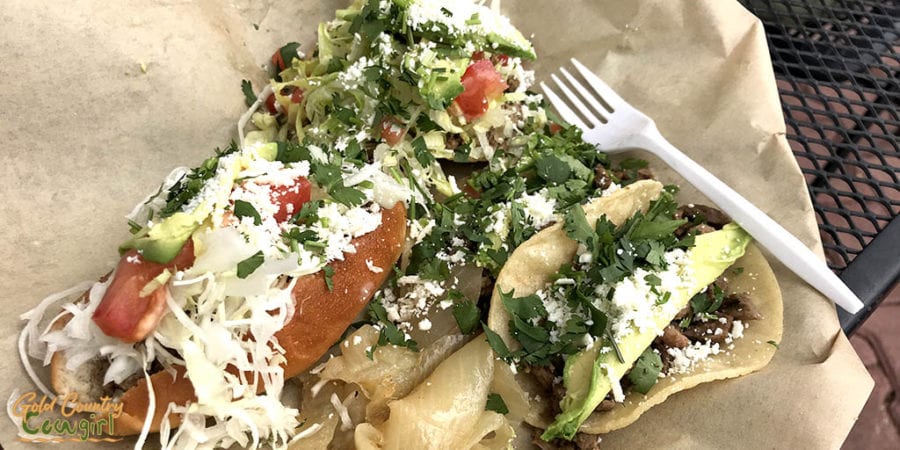

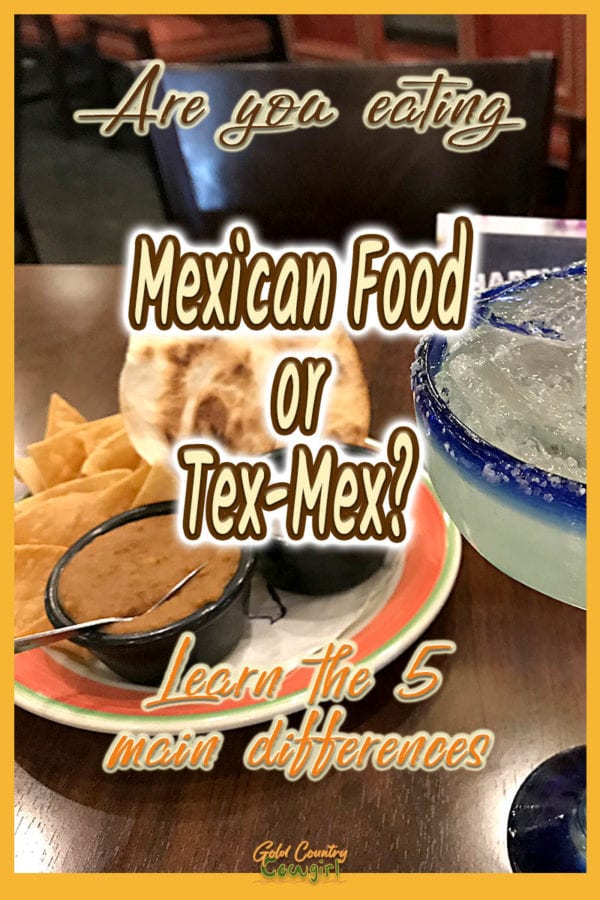
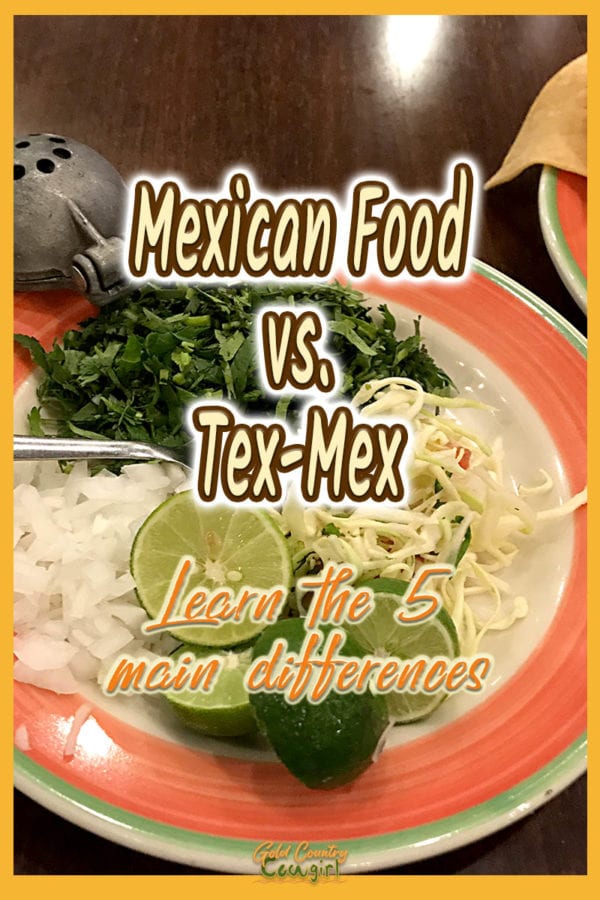





















Oh Wauw! I never knew this.
I guess in Europe most of it is Tex-Mex and not Mexican.
Cumin, sour cream, beef, and wheat tortillas are used a lot.
Still unbelievable good, but I guess I have to eat real Mexican food quick!
After years of eating both, this all came as a surprise to me too.
I hadn’t really thought about the difference between Mexican and Tex-Mex. I live in southern California, and I just assumed almost everything I ate here was authentic Mexican. It appears I was wrong! Not that it really matters, though, because I love it all!
After I got over my surprise, that was basically my conclusion. I love it all!
I knew there are differences because, when we stayed in Mexico for three months last winter, there were none of the familiar Tex-Mex cheesy gooey dishes. More of the dishes not common in US Mexican restaurants like barbacoa, mole, adobo, menudo, pozole, birrhia, etc..
Yes, you are sure right about some of those dishes not being available here, even in “real” Mexican restaurants. Haven’t seen any mole since I was in the Yucatan.
This must be a burning question in America. I wondered the same thing as we were preparing to visit San Antonio, Texas, and I have a similarly titled blog post drafted. Ha! ~ Sage Scott, the Everyday Wanderer
How funny! Glad to know I’m not the only one who didn’t know the difference. I’ll be sure to watch for your post.
Pingback: Freddy Fender Museum is Just One of the Museums of San Benito | Gold Country Cowgirl
Pingback: Authentic Texas Barbecue -- What it is and where to find it in the RGV | Gold Country Cowgirl
Dang, girl, you have made me so hungry with this post! I am stuck in the middle of Yankeeland (Indiana) where real Tex-Mex is rare. Thanks for clarifying the diff between Mex and Tex-Mex. Have you also done an article about the difference between Texas chili and “chili” in the rest of the country?
Very cool post. I lived in Texas for half a year and had come across the question a few times, but it was a random conversation with a Mexican mate that really opened my eyes. Your post still had a lot of new insights for me, like sour cream and yellow vs white cheese.
I can see that Mexican and Tex-Mex cuisines are as fluid as the border – there’s no set definition on what constitutes the one of the other.
I also find it interesting that Mexican / Tex-Mex cuisine in New Mexico is spicier than in Texas and California due to New Mexicans’ love of the green chili pepper.
Pingback: San Antonio Riverwalk Downtown Reach - What to See and Do |
Lol a lot of this is utter bs. Sounds like a gringo who’s only tried one type of Mexican food (cilantro onion corn tacos) and called it a day. A lot of what you’re claiming to be tex mex is from northern Mexico. A lot of the features you’re claiming to be texmex is common all over Mexico (like flour tortillas? You realize we use flour tortillas….?)
You sound a little angry, Sasha! I did a lot of research for this post and not just from gringos. I have traveled all over Mexico and appreciate the food from all regions. I think the post addresses the issue of how things have evolved over the years (how old are you?) and blurred the lines, much of which was to satisfy the palettes of those gringos you seem to despise. I find a lot of younger Hispanics get defensive about this idea and I’m not sure why.
Best article I’ve read on this subject. I’ve eaten “mexican food” for around sixty years. Starting in Oklahoma. But also in Mexico border towns (Nogales, Reynosa) and in Texas, California, Arizona, Colorado and New Mexico. Living now in Texas for 15 years — I think you have the most complete and accurate description of the differences. You could examine more of the history of Tex Mex (the chili queens, Ninfa, etc.) but you have a good base.